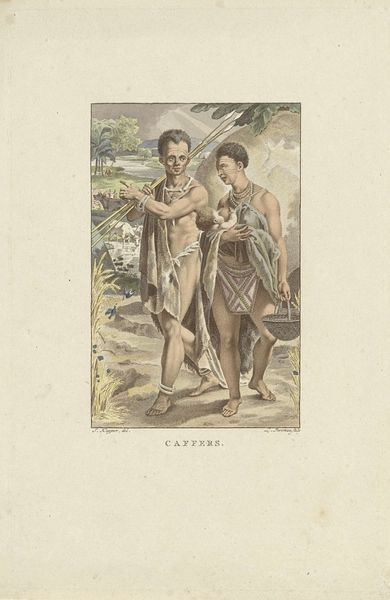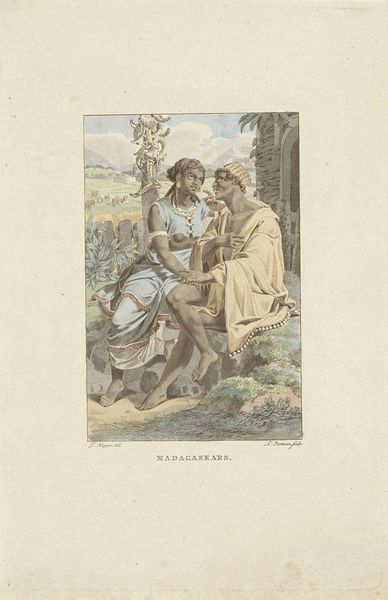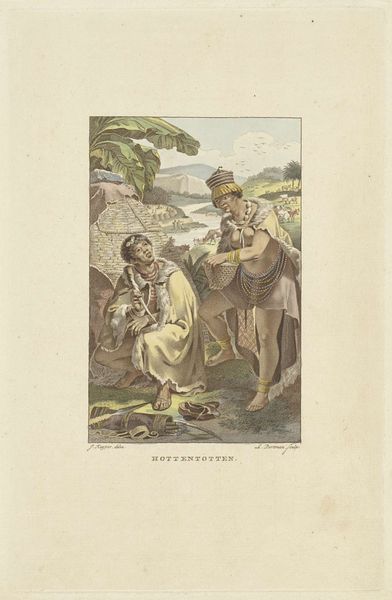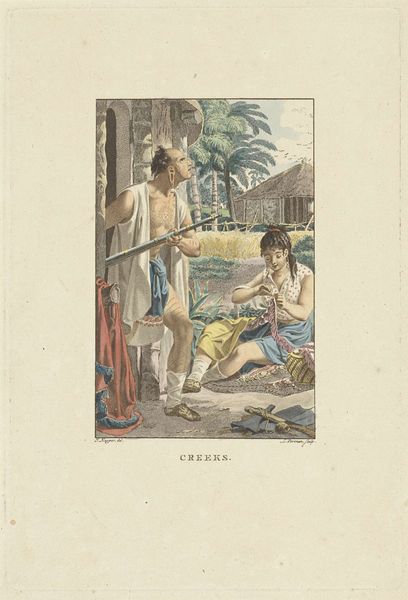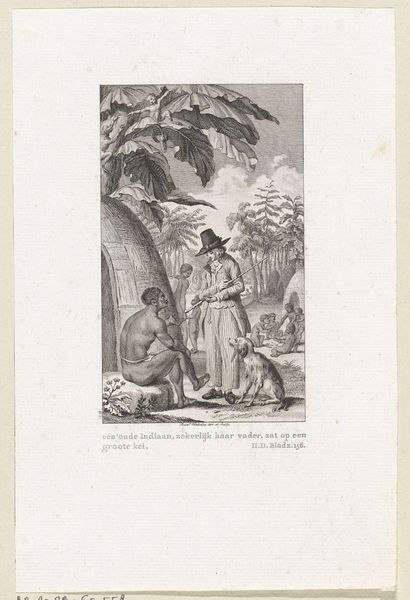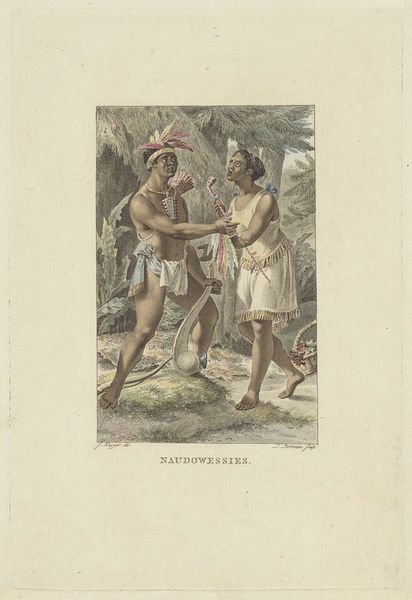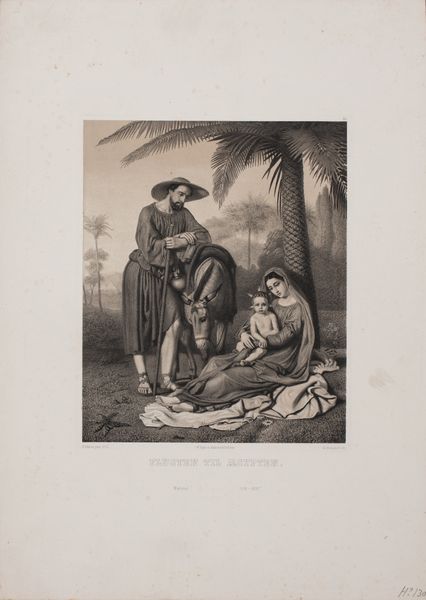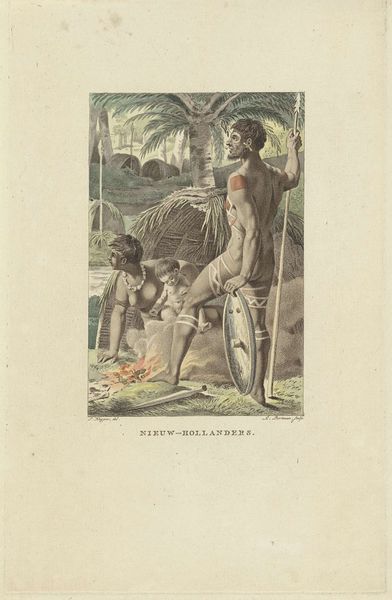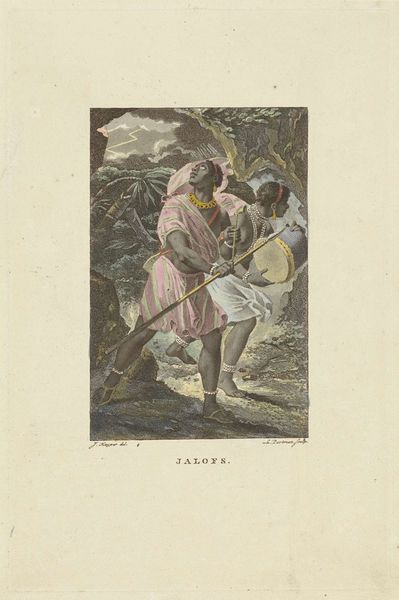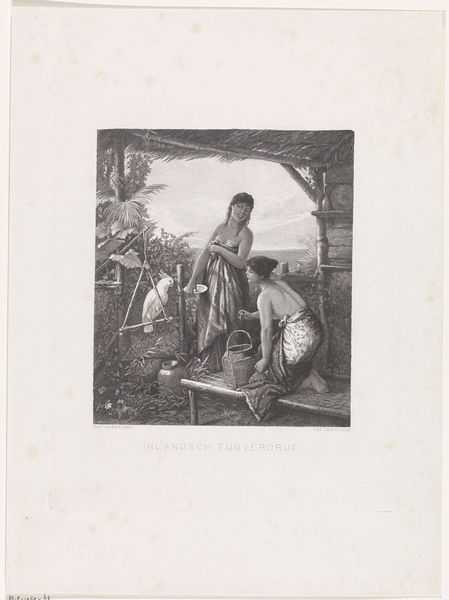
#
portrait
# print
#
landscape
#
watercolor
Dimensions: height 236 mm, width 158 mm
Copyright: Rijks Museum: Open Domain
Curator: Let's turn our attention to "Bewoners van Mexico," or "Residents of Mexico," a watercolor work created around 1805 by Ludwig Gottlieb Portman, held here at the Rijksmuseum. What strikes you upon viewing it? Editor: The initial impact comes from the somewhat stark contrast between the richly detailed foreground figures and the more atmospheric landscape. It's as if two distinct artistic approaches were almost colliding within the same plane. Curator: Absolutely. Portman meticulously renders the attire and physiognomy of these indigenous Mexican individuals. Notice how the man’s sleeveless top has an almost checked or patterned construction. It highlights how crucial sartorial details are in marking social status. Editor: The symbols in this painting are definitely communicating identity and belonging. Look at the woman’s headpiece and jewelry—likely markers of rank or tribal association. These elements create layers of meaning that invite interpretation beyond surface level observation. Curator: Note that Portman's strategic use of light also merits consideration. Light doesn't merely illuminate; it delineates form, casting distinct shadows and crafting visual weight. He carefully regulates transitions of tone—it provides us clues in understanding the relationship among forms in space. Editor: True, and in that light, think about the historical context. What were the common assumptions and attitudes of Europeans towards colonized populations? This imagery undoubtedly played a role in shaping that understanding and also reflects that period’s interest in ethnography. Curator: Indisputably. Yet beyond merely being anthropological, this work transcends just its representational aspect. Take notice of Portman's deliberate compositions – the placement and gestures, carefully guide our eye. Even the placement of tools lying nearby has compositional relevance. Editor: Agreed. The arrangement certainly leads us to perceive narrative. It seems a loaded moment—with inherent cultural messaging—captured during the era of burgeoning Romanticism and its fascination with the "exotic." It sparks the dialogue between observer and observed—raising poignant questions about cultural representation. Curator: It's a wonderful lens for interpreting cultural exchange—this artwork, a reminder of the enduring dialogue between form and significance in art and also history. Editor: A painting that invites a re-evaluation of art history and what cultural representation can become in our evolving perspectives.
Comments
No comments
Be the first to comment and join the conversation on the ultimate creative platform.
